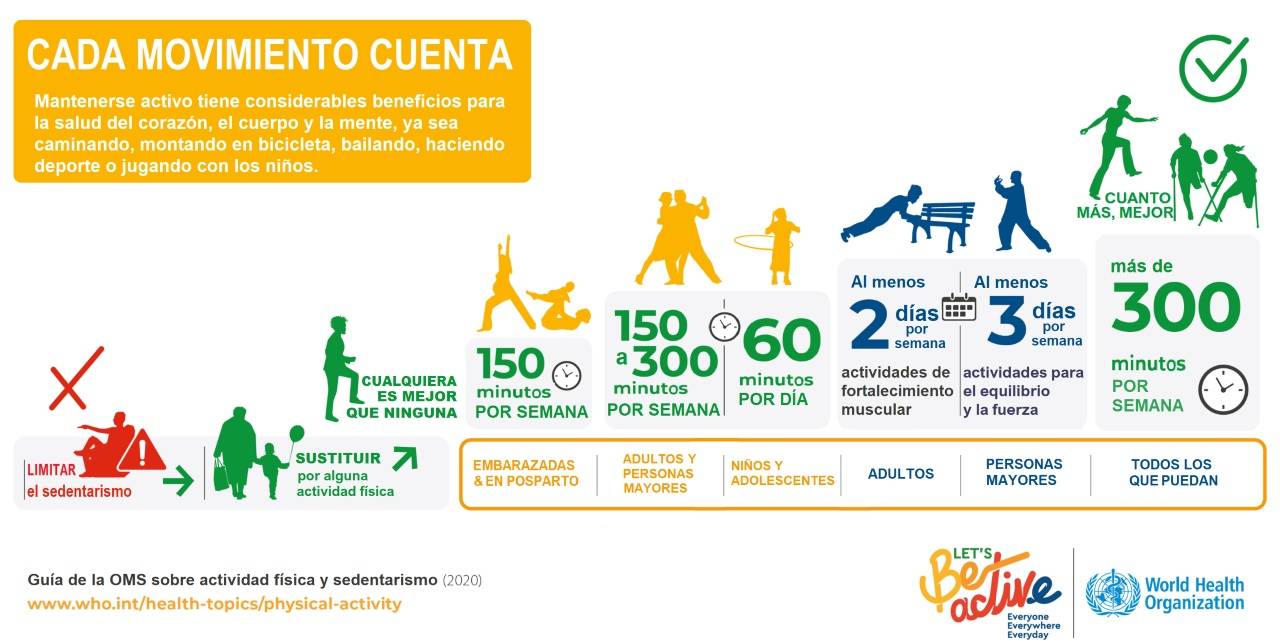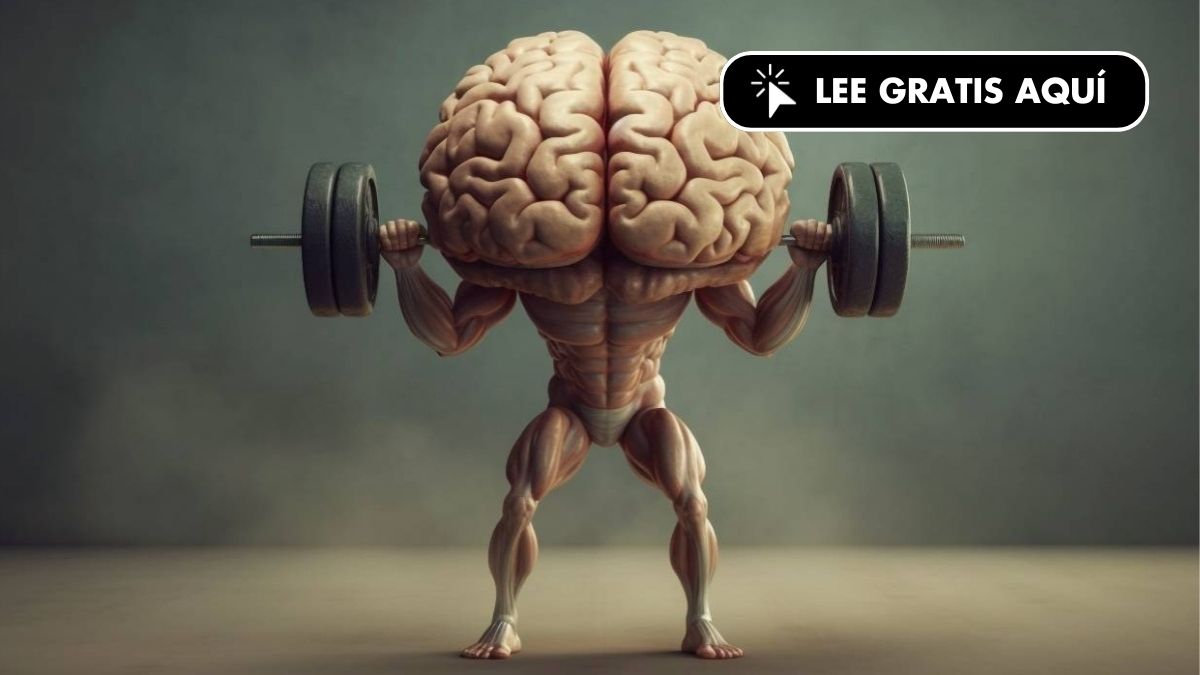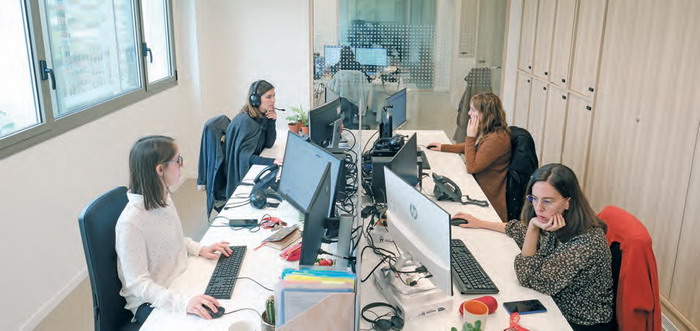physical activity is key



He sedentary lifestyle It constitutes the fourth risk factor for global mortality, behind hypertension, tobacco consumption and high blood sugar levels, according to the World Health Organization (WHO). And it is also one of the main risk factors for neurodegenerative and cerebrovascular diseases.
In Brain Week, celebrated this year from September 30 to October 4 by the Spanish Society of Neurology (SEN), among other topics are discussed how Physical activity is an ally against depression, anxiety and stress, and to enhance brain health, as detailed by the international health institution.
many studies reflect the benefits of exercise for physical and mental health. However, almost half of the Spanish population has sedentary habitsthat is, he spends much of the day sitting and with little physical activity, a bad habit that is more widespread among women.
And not reaching the threshold of 150 minutes of exercise per week recommended by the WHO (half an hour 5 days a week) means being in a delicate situation of ‘physical inactivity’ that can bring with it many pathologies, especially cerebrovascular diseases, as highlighted ago. a couple of years another work published in The Lancet.
Why does a sedentary lifestyle feel so bad for us?
Herman Pontzer, professor of Evolutionary Anthropology and Global Health at Duke University, maintains that we are designed to do physical exercise as an inheritance from our hunter-gatherer ancestors.
“Chasing and hunting animals requires marked physical activity and a group strategy, which in turn favored a more evolved brain in our species that demands more energy,” he clarifies to SINC. Jose Luis Trejohead of the Lifestyle and Cognition Group at the Instituto Cajal CSIC. To find food, men traveled about 14 kilometers a day and women, also very physically active, about 12.
“Our body has evolved from those ancestors to exercise,” highlights Trejo, who is author of the book Brain and exercise (Ed. Catarata-CSIC) together with Coral Sanfeliufrom the Barcelona Biomedical Research Institute.
A situation that contrasts with what is happening today. “Sitting at a desk or in front of the television for prolonged periods is linked to a lower life expectancy,” explains Pontzer in a detailed popular article published in the magazine Scientific American.
As Trejo points out, «A sedentary lifestyle is the main enemy of a healthy brain». We cannot forget that the brain is irrigated by blood vessels that provide oxygen and nutrition, so maintaining and protecting cardiovascular health is essential for your health.
Thus, a recent study in Circulationone of the most prestigious publications in the field of cardiology, supports how short bursts of about 12 minutes of intense cardiopulmonary exercise induce changes in 80% of circulating metabolites linked to a wide range of favorable health outcomes.

Greater learning capacity
The vice president of the SEN, David Ezpeleta Echávarri, explains to SINC that physical activity is beneficial both for the cerebral vascularization as to promote the number of synapses. Exercise is also associated with healthier brain aging, capable of delaying the appearance of clinical manifestations of neurodegenerative diseases.
Furthermore, “regular practice improves learning and memory capacity, and has a antidepressant and anxiolytic well demonstrated in human beings,” adds Trejo. A good vaccine against two of the ‘evils’ of our time.
Espeleta indicates that exercise provides additional benefits to the brains of children and adolescents: it increases neural growth factors. [necesarios para la supervivencia de las neuronas]such as brain-derived neurotrophic factor, which promote the formation of synapses and other processes related to brain plasticity [capacidad para modular su actividad en función del entorno en que vivimos].
These advantages are also observed throughout life, but are especially relevant in childhood, given the high prevalence of childhood sedentary lifestyle, mainly due to the use of screens. Thus, this expert remembers that it is important to instill healthy exercise patterns in the little ones to take care of a brain that is still developing.
Neuroprotection for the brain
In 2013, Harvard University researchers (USA) discovered that a protein called irisin increased in the brain with resistance exercise. This protein turned out to be the missing link in the chain that goes from exercise to brain health.
The experts verified in rodents that, by increasing the levels of irisin in the blood with physical exercise, it could cross the blood-brain barrier that protects the brain, and thus increased the expression of the brain-derived neurotrophic factor and genes involved in cognition were activated. The irisin produced has the ability to control this important neuroprotective pathway in the brain.
This protein, already considered a hormone, has aroused a lot of interest. A new article proposes that irisin could prevent memory loss related to Alzheimer’s disease, reinforcing the neuroprotective capacity attributed to exercise.
As if all these benefits were not enough, persistently active people are 55% more likely to have more regular sleep, without interruptions and fewer difficulties initiating it, according to 10 years of research in adults aged 39 to 67, recently published in he British Medical Journal. And restful sleep is crucial for the production and secretion of hormones that regulate a multitude of body processes.

Sport yes, but not too much
It’s never too late to start exercising or reap its many benefits. This was reflected in a study in British Journal of Sports Medicine with 3,454 healthy men and women with an average age of 63 years who, after four years of sustained regular physical activity, multiplied by 7 the probability of having healthy aging.
But like everything, exercise must also be done in the right amount. José Luis Trejo warns that if the intensity or amount of exercise is increased too much, the benefits are reduced, and may even be nullified to the point of not presenting any differences compared to a sedentary person.
In fact, as shown study published in PNAS in 2013the brain has a braking mechanism when we ‘over’ activity. In addition to the fatigue that accompanies prolonged exercise, there is another factor that originates in the central nervous system and causes extreme fatigue and prevents us from continuing. It is called central fatigue and it is caused by serotonin.
An effort that spans generations
Exercising not only benefits the person doing it, but also their offspring. Trejo has shown in rodents that the offspring of those who remain physically active reach their grandchildren. Even if they are sedentary, something that is of course not recommended.
And it translates into a better learning and memory capacity, as he explained in his latest work published in June in the Journal of Neuroscience. These cognitive benefits, Trejo tells SINC, are transmitted through sexual cells through microRNAs that regulate gene expression and are involved in epigenetic inheritance.
“Although the study was carried out in mice, the epigenetic mechanisms involved are highly conserved between species and are essentially the same in humans,” he points out.

Exercise in recipe
More and more experts consider exercise an essential pillar in health management. Some even prescribe it. From the Jiménez Díaz Foundation University Hospital from Madrid even consider that well-done exercise is probably as effective, or even more, than some treatments. That is why they prescribe it to their patients to help improve their well-being and quality of life.
Experts recommend always doing the activity progressively and maintain an appropriate intensity according to the physical state of each person, as well as combine aerobic with strength exercise to gain muscle. Of course, everything with an appropriate intensity and always in moderation.
“Physical activity is great and should be promoted as much as the Mediterranean diet,” he concludes. Oscar Gomezcorporate director of Care Continuity at the Madrid hospital.




Post Comment